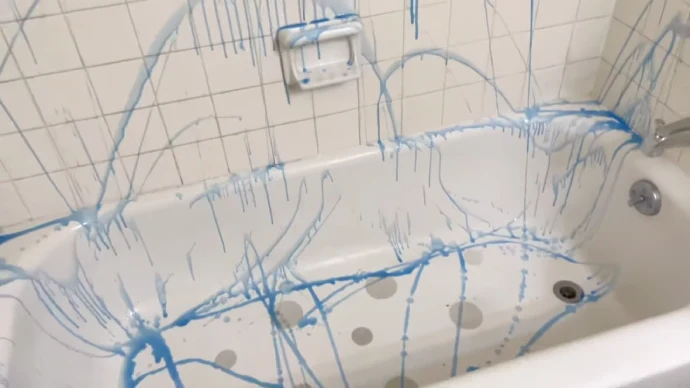Last Updated on October 16, 2023
Cleaning your bathtub with toilet bowl cleaner may seem like an easy solution, but it is not safe for your health and the bathtub’s finish.
Toilet bowl cleaners are specifically formulated for cleaning inside toilets and contain strong chemicals that can ruin surfaces in the bathroom.
Not only can these chemicals cause irritation or even chemical burns on your skin, but they can also deteriorate fixtures in your tub over time.
We will discuss why it is unsafe to use toilet bowl cleaner on a bathtub, what the risks are and what other safe alternatives you have for cleaning your tub.
Can Toilet Bowl Cleaner Be Used On A Bathtub: Why You Shouldn’t
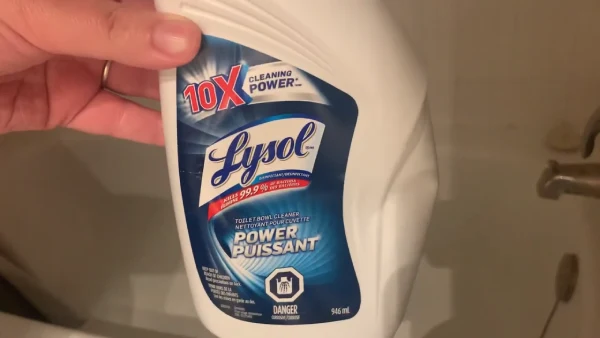
Using toilet bowl cleaner on your bathtub can be hazardous to your health and cause severe degradation to the surface of your tub.
The active ingredients found in toilet bowl cleaners are designed to break down tough deposits within a toilet bowl. But on a bathtub, they provide an overly strong cleaning solution that can strip away the protective coating and leave your tub more vulnerable to deterioration.
The active chemical ingredients in these cleaners are often sodium hypochlorite (bleach), hydrochloric acid, ammonia, and benzenesulfonic acid.
Sodium hypochlorite is the most common ingredient used in disinfectants and is known for its bleaching properties, however, it is also highly corrosive and can cause permanent destruction to surfaces.
Hydrochloric acid is also a powerful acidic compound that can corrode metals like copper or bronze, as well as discolor surfaces made of plastic or rubber. Ammonia and benzenesulfonic acid are both caustic materials that could cause skin irritation or burning if exposed directly to the skin.
Aside from potential hazards from the harsh chemicals present in toilet bowl cleaners, there are also associated health risks from using them on a bathtub rather than just a toilet bowl.
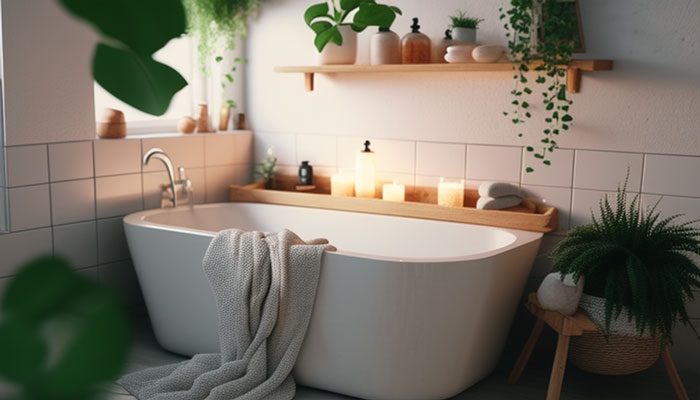
The toxic fumes released by these chemicals could irritate your lungs if inhaled over long periods of time or in high concentrations. They may also negatively affect certain medical conditions, such as asthma or allergies, making it especially important to avoid using these products on anything other than toilets.
Direct contact with these harsh chemicals could lead to irritations or even chemical burns on exposed skin if not thoroughly rinsed off afterward.
Overall, it is best to avoid using toilet cleaner on surfaces other than a toilet. While it might be tempting to use this stronger product when tackling stubborn stains from your bathtub, you’re actually putting yourself and your family at risk of harm due to the strong toxicity of its ingredients.
If you need help cleaning tough stains from your tub, consider trying out one of the many less-abrasive cleaning products specifically designed for bathroom surfaces instead.
Safe Methods for Cleaning a Bathtub Instead of Using a Toilet Bowl Cleaner
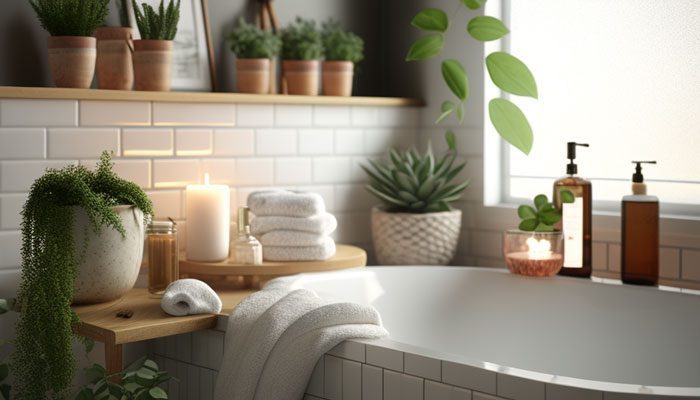
Method 01: Baking Soda and White Vinegar
Baking soda and white vinegar are a great combination for cleaning a bathtub safely without the use of harsher chemical-based toilet bowl cleaners.
The alkaline properties of baking soda help break down dirt, grease, and gunk and neutralize odors. White vinegar is acidic, which also helps to break down build-up while disinfecting surfaces. Combining these two ingredients instantly creates an effective cleaning solution that can be used on many surfaces in the bathroom.
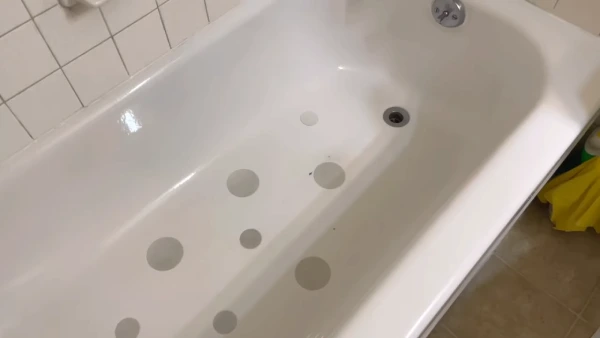
Process for Creating the Solution: To create this safe cleaning solution, start by mixing one part baking soda with two parts white distilled vinegar in a bowl or container large enough to hold the solution you are making.
Stir the mixture until the baking soda has dissolved completely into the vinegar, and then pour it into a spray bottle if desired for easier application. Alternatively, you can spread it onto affected areas using an old rag or sponge instead of using a spray bottle.
Process for Cleaning: Once your homemade cleaning solution is ready, begin by spraying or spreading it over any affected areas in your bathtub and shower surfaces that need to be cleaned, such as soap scum or mildew buildup.
Let it sit for about 5 minutes before scrubbing with a soft brush or rag gently until all of the dirt and grime has been removed from the surface.
If there are any stubborn areas that still need more attention, you can sprinkle additional baking soda directly onto them before scrubbing again with your brush or rag until they come clean.
After all, areas have been scrubbed clean, wipe away any remaining residue with a damp cloth and rinse thoroughly with warm water to remove any residue left behind from your cleaning mixture before drying off completely with another towel when finished.
Method 02: Hydrogen Peroxide and Baking Soda
Hydrogen peroxide is another popular choice for safely cleaning bathtubs without harsh chemical-based products thanks to its natural bleaching properties, which help to reduce stains caused by soap scum, fungus, dirt buildup, etc.
Combined with baking soda, which adds the abrasiveness needed to remove tough stains, hydrogen peroxide is an excellent choice for deeper cleaning. It’s gentle enough not to hurt porcelain or glass tub enclosures in bathrooms today.
Process for Creating the Solution: Start by mixing equal parts of hydrogen peroxide (3%) with baking soda in a bowl until they form a paste-like consistency.
This mixture should be thick enough to stay put when applied directly onto difficult stains but still thin enough so that it spreads easily across larger areas as needed during application onto other surfaces as well, like walls or floors near your tub area.
Once you’ve achieved this desired consistency, transfer your homemade bathroom cleaner into an empty spray bottle if desired for easier use during application later on.
Just ensure not to leave this mixture sitting around too long since its bleaching properties can diminish when exposed to air for too long, resulting in less effective cleanses afterward.

Process for Cleaning: To begin using this cleaner, spray or spread it liberally over all affected areas of your bathtub.
Such as corners where fungus may be present, along edges where mold may have formed due to moisture buildup, along drain lines where hard water deposits normally collect, etc.
Allow it to sit on these stained areas undisturbed for at least 10 minutes before beginning to scrub gently with an old rag/sponge. Focusing extra attention on tougher spots that may require additional elbow grease during application.
After all, surfaces have been sufficiently scrubbed clean, rinse them off thoroughly with warm water before drying off completely once finished.
Method 03: Using Borax
Borax is another great option for cleaning your bathtub safely without exposing yourself to harsh chemicals, as toilet bowl cleaners would do.
Process for Creating the Solution: In order to make this solution, you will need one cup of borax powder mixed into one gallon of warm water (not hot).
Stir this mixture together until all of the powder has dissolved to create your liquid cleaner, then pour it directly into an empty spray bottle for easy use later on when needed.
Process for Cleaning: To clean your bathtub using this method, start by spraying down all affected areas evenly, then let sit for 5-10 minutes before wiping away any residual dirt or debris left behind using either a clean cloth or sponge.
Afterward, please remember to rinse everything down using some warm water, then dry off to prevent streaks while also preventing fungus growth.

Method 04: Using Chemical-Free Detergents
Using chemical-free detergents is also another great way to safely clean your bathroom without having been exposed to dangerous chemicals found in traditional cleaners such as those used in toilet bowl cleaners.
These detergents work by combining natural ingredients such as vinegar, lemon juice, olive oil, etc., which help break down soap scum, hard water deposits, and other tough stains found around bathrooms safely without exposing yourself or the environment to any harm.
Process for Cleaning: To effectively use these detergents start by wetting down the entire area first. Then spray on top some prediluted chemical-free detergent directly onto the affected spots being careful not to over-saturate them.
Next, leave to sit anywhere between 5 to 10 minutes, depending on the severity of the stain, before scrubbing away excess residue with either a soft sponge, brush, etc. Once finished remember to always rinse the area afterward before drying to prevent streaks, mold growth, etc.
How Often Should I Clean My Bathtub?
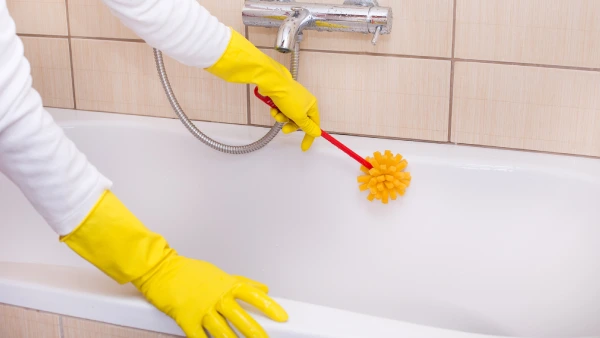
It is recommended to clean your bathtub at least once every two weeks to maintain proper hygiene. If you use your bathtub often and tend to get dirtier more quickly, you may want to consider cleaning it on a weekly basis.
Also, if you have children or pets that love splashing around in the water, you may need to clean your bathtub more regularly than every two weeks as well.
How Long Can I Let a Cleaning Solution Sit on a Bathtub Before Scrubbing?
It is best to allow your cleaning solution to sit on the bathtub for 15 to 20 minutes before scrubbing it away. This allows the chemicals to break down dirt and grime, making them easier to remove when you begin to scrub afterward.
It’s best not to leave the cleaning solution on for too long, as it may affect certain surfaces if left for extended periods of time. It is also essential to read the labels of products you are using, as some require more or less time than others for optimal results.
What Kind of Sponge or Brush Should I Use When Scrubbing the Bathtub?
When scrubbing your bathtub, it is best to use either a scrub sponge or a stiff nylon brush with soft bristles to avoid scratching or damaging the surface material you are attempting to clean.
A sponge with small circular grooves is great for removing built-up dirt and grime while still being gentle enough not to cause any harm whilst scrubbing your tub.

You may also consider using a non-abrasive cleaner along with your chosen sponge or brush. By doing this, you prevent any potential harm that could come from using harsh chemical cleaners without proper care and maintenance techniques beforehand.
Don’t Clean the Tub with Toilet Bowl Cleaner: Go Natural Alternative
Toilet bowl cleaner is not safe to use on bathtubs because it contains harsh chemicals that can cause irritation and skin burns, and deterioration of fixtures in your tub.
To clean your bathtub safely and effectively, try using baking soda and white vinegar, hydrogen peroxide and baking soda, borax, or chemical-free detergents instead.
Depending on which method you choose, you can quickly restore the freshness of your bathroom without putting yourself or your fixtures at risk.
So next time you do some cleaning in the bathroom, remember to think about the safety of both yourself and your home before choosing a cleaning product.

